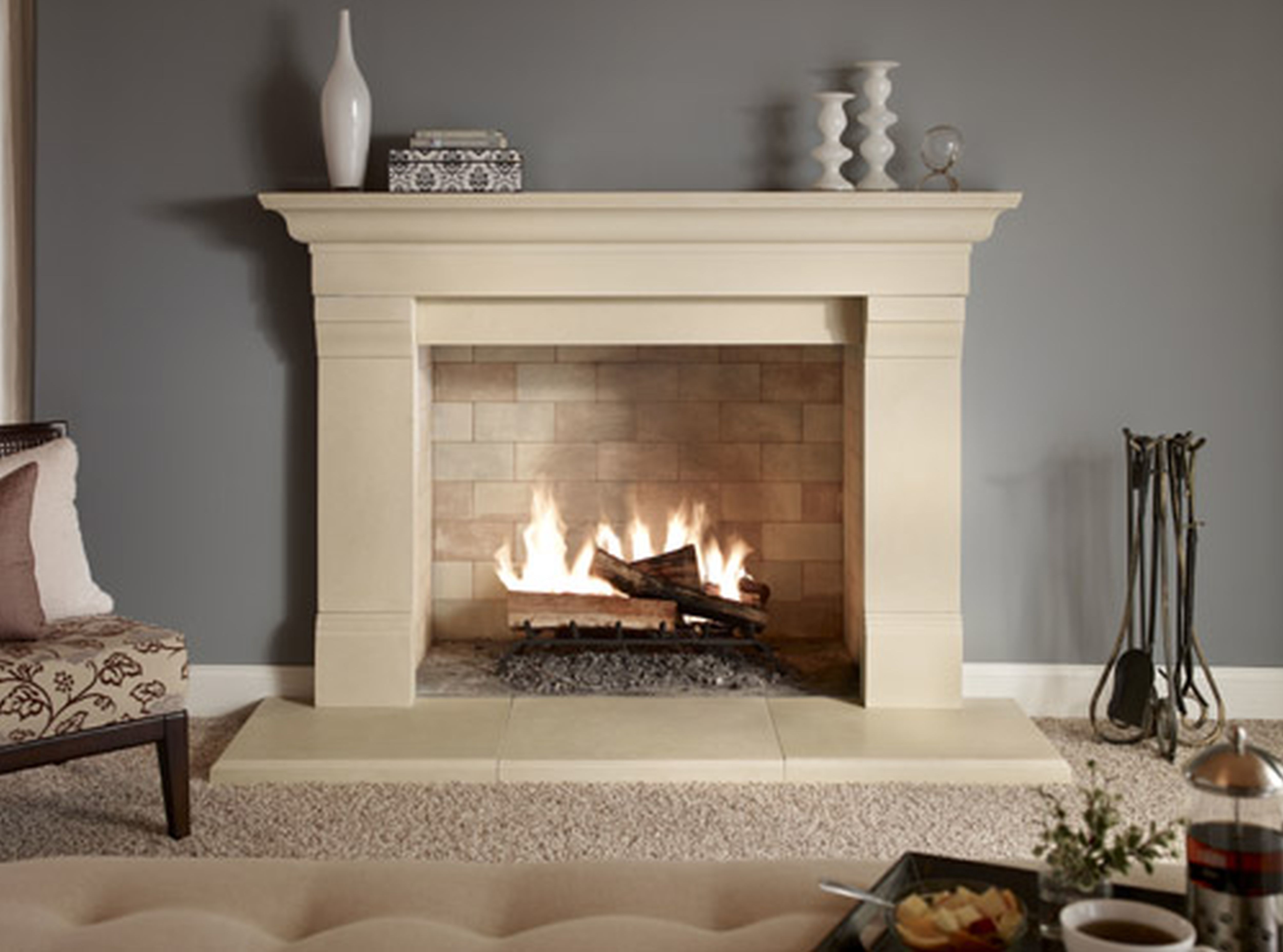Fireplace Design Elements

Fireplace design – Fireplaces are a timeless and versatile design element that can add warmth, ambiance, and style to any space. Whether you’re looking for a traditional wood-burning fireplace or a modern electric model, there are endless design possibilities to consider.
Before you start planning your fireplace, it’s important to understand the different types of fireplaces available and their design considerations.
Types of Fireplaces
- Wood-burning fireplaces are the most traditional type of fireplace and offer the most authentic experience. They require a chimney to vent smoke and fumes, and they can be used for both heating and ambiance.
- Gas fireplaces are a more convenient option than wood-burning fireplaces. They use natural gas or propane to create a realistic flame, and they don’t require a chimney. Gas fireplaces are also more efficient than wood-burning fireplaces, and they can be turned on and off with a switch.
- Electric fireplaces are the most modern type of fireplace. They use electricity to create a realistic flame, and they don’t require any venting. Electric fireplaces are the most convenient and energy-efficient option, and they can be installed anywhere in your home.
Once you’ve chosen the type of fireplace you want, you’ll need to consider the materials you’ll use for the surround, mantel, and hearth.
Fireplace Materials, Fireplace design
- Stone is a classic choice for fireplace surrounds and mantels. It’s durable, heat-resistant, and available in a wide range of colors and textures.
- Brick is another popular choice for fireplace surrounds and mantels. It’s also durable and heat-resistant, and it gives a more rustic look than stone.
- Metal is a modern choice for fireplace surrounds and mantels. It’s sleek, contemporary, and available in a variety of finishes.
The hearth is the area in front of the fireplace where you build a fire. It’s important to choose a material that is heat-resistant and durable. Some popular choices for hearths include tile, stone, and brick.
Fireplace Surrounds, Mantels, and Hearths
The fireplace surround is the frame that surrounds the firebox. It can be made from a variety of materials, including stone, brick, metal, or wood.
The mantel is the shelf that sits above the fireplace surround. It can be made from the same material as the surround, or it can be a different material. Mantels are often used to display decorative objects or artwork.
The hearth is the area in front of the fireplace where you build a fire. It can be made from a variety of materials, including tile, stone, or brick. Hearths are often used to protect the floor from sparks and embers.
Fireplace Design Styles

Fireplaces serve as both a source of warmth and a focal point in any room. The design style of a fireplace can greatly impact the overall aesthetic of the space, from traditional to modern and rustic.
Color, texture, and patterns play a crucial role in fireplace design. Neutral colors like white, gray, and black create a timeless and elegant look, while bolder hues like red, orange, and yellow add a touch of warmth and vibrancy. Natural materials like stone, wood, and brick bring a sense of rustic charm, while sleek metals and glass lend a modern touch.
Traditional Styles
Traditional fireplace designs often feature intricate details and classic materials. They are typically made of stone or brick and may incorporate elements such as carved moldings, decorative mantels, and ornate surrounds.
Modern Styles
Modern fireplace designs are characterized by clean lines, geometric shapes, and minimal ornamentation. They often feature materials like metal, glass, and concrete and may incorporate elements such as floating hearths and built-in storage.
Rustic Styles
Rustic fireplace designs evoke a sense of warmth and coziness. They are typically made of natural materials like wood, stone, or brick and may feature rough-hewn textures and simple lines.
Emerging Trends
Fireplace design is constantly evolving, with new trends emerging all the time. Some of the latest trends include:
- Electric fireplaces: Electric fireplaces offer a convenient and efficient alternative to traditional wood-burning fireplaces. They come in a variety of styles and can be installed almost anywhere.
- Outdoor fireplaces: Outdoor fireplaces extend the enjoyment of a fireplace to the outdoors. They can be built from a variety of materials and can be used for cooking, entertaining, or simply relaxing.
- Eco-friendly fireplaces: Eco-friendly fireplaces are designed to minimize their environmental impact. They may use renewable fuels, such as ethanol or wood pellets, or incorporate energy-efficient features.
Fireplace Design Considerations

Fireplaces can enhance the ambiance and warmth of a room, but they also require careful planning and design considerations to ensure optimal functionality, safety, and efficiency.
Fireplace Placement
The placement of the fireplace significantly impacts the room’s layout and functionality. A centrally located fireplace can serve as a focal point and divide the space into distinct areas. Conversely, a fireplace positioned against a wall can create a cozy nook or provide a backdrop for furniture arrangement.
Safety Considerations
Fireplace safety is paramount. Proper ventilation is essential to prevent carbon monoxide buildup. Clearances must be maintained around the fireplace to avoid heat damage to surrounding materials. Fireproofing materials, such as fire-resistant drywall or bricks, should be used to protect walls and floors from sparks and embers.
Fireplace Efficiency
Fireplace efficiency is crucial for maximizing heat output while minimizing energy consumption. High-efficiency fireplaces, such as gas or pellet stoves, can provide more heat with less fuel. Proper insulation around the fireplace can also help retain heat and reduce heat loss.